
surfresearch.com.au
court and merritt: george freeth, 1915
court and merritt: george freeth, 1915
|
|
|
|
|
|
 |
surfresearch.com.au
court and merritt: george freeth, 1915 |
| Page 62 The surf-board joy-rider turned life-saver - Launching the Redondo Beach life-boat. (See "'He Sure Can Swim,’ ” page 85) |
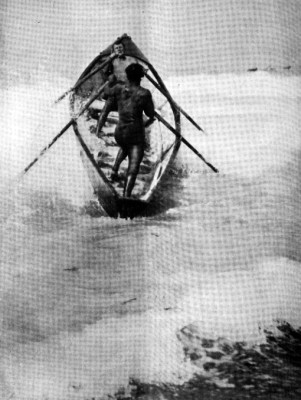 |
|
“HE SURE CAN SWIM"
So says everybody of George Freeth, the Southern California Coast's hero of the water. And he proves it By CARROLL VAN COURT AND M. C. MERRlTT ON May 17, 1914, at Hermosa Beach, California, there were gathered about 3,000 people to witness the opening of a new pier. A program of music and athletics was given, including aquatic contests and exhibitions. There were swimming races, diving contests and aquatic stunts by amateurs and professionals. George Freeth, the swimming instructor of the Los Angeles Athletic Club, and one of the greatest professional swimmers and divers on the coast, was there and gave several exhibitions. He introduced surfboard
riding at the California beaches.
|
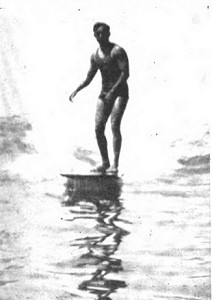 |
|
George Freeth and his life-saving torpedo. Down beneath the waves went the two, urged on by the delighted cheers of the surprised crowd of at least a thousand people. Seal and man disappeared for a few seconds. Then a dark streak shot into the air followed by a man with his hair flying who gulped a breath of air before he was again jerked below the surface. And so the battle continued, for nearly half an hour, the two appearing and disappearing at intervals. |
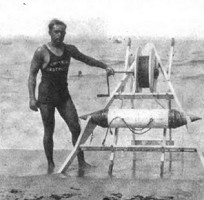 |
|
He is one of the court’s finest fancy divers, and is supreme at water Polo. It was this same George Freeth who in 1900 restored the lost art of surf-board riding. In the museum of Honolulu is an old surf-board, handed down from the early days, which was given to Mr. Freeth by his uncle, a Hawaiian prince. As a boy he persisted in trying to ride the breakers standing on this board, which was sixteen feet long, two feet wide and four inches thick.After many mishaps he decided that the board was too long, so he developed the plan of his present board, which is eight feet long, two feet wide and three inches thick, made of redwood, weighing forty pounds. Freeth was born of English-Hawaiian parentage, in Honolulu, on November 8, 1883. His exploits in the water antedate his memory and they increased with rapidity and skill during the years. In life-saving work he detected serious defects in the ring buoy and invented one which surpasses it in efficiency and speed. His device consists of a hollow, air-tight copper torpedo forty-two inches by eight, which will hold up a dead weight of five hundred pounds. Being pointed, it will pass through the breakers with little resistance, which is impossible with the ring buoy. |
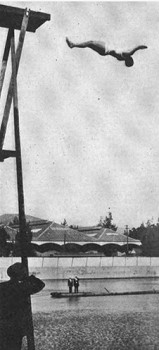 |
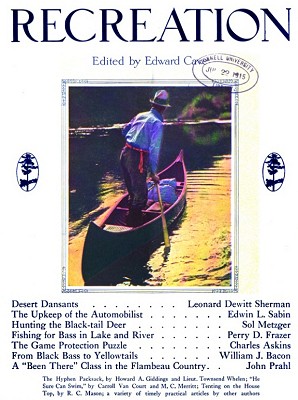 |
Carroll Van Court and M. C. Merritt: He Sure Can Swim. Recreation Outdoor World Publishing Company, New York. Volume 53 Number 2 August, 1915 Hathi Trust https://hdl.handle.net/2027/coo.31924094284993  Header, page 63 |
|
|
|
|
|
|